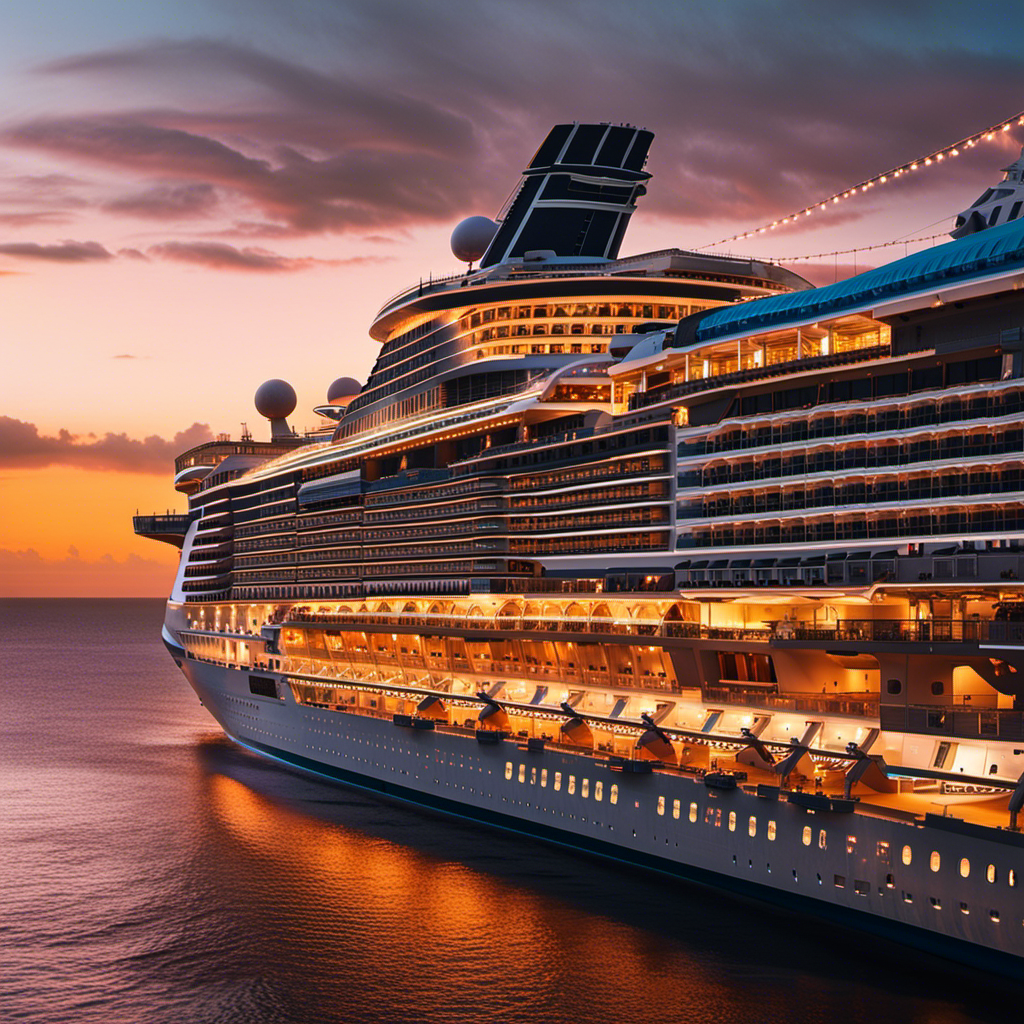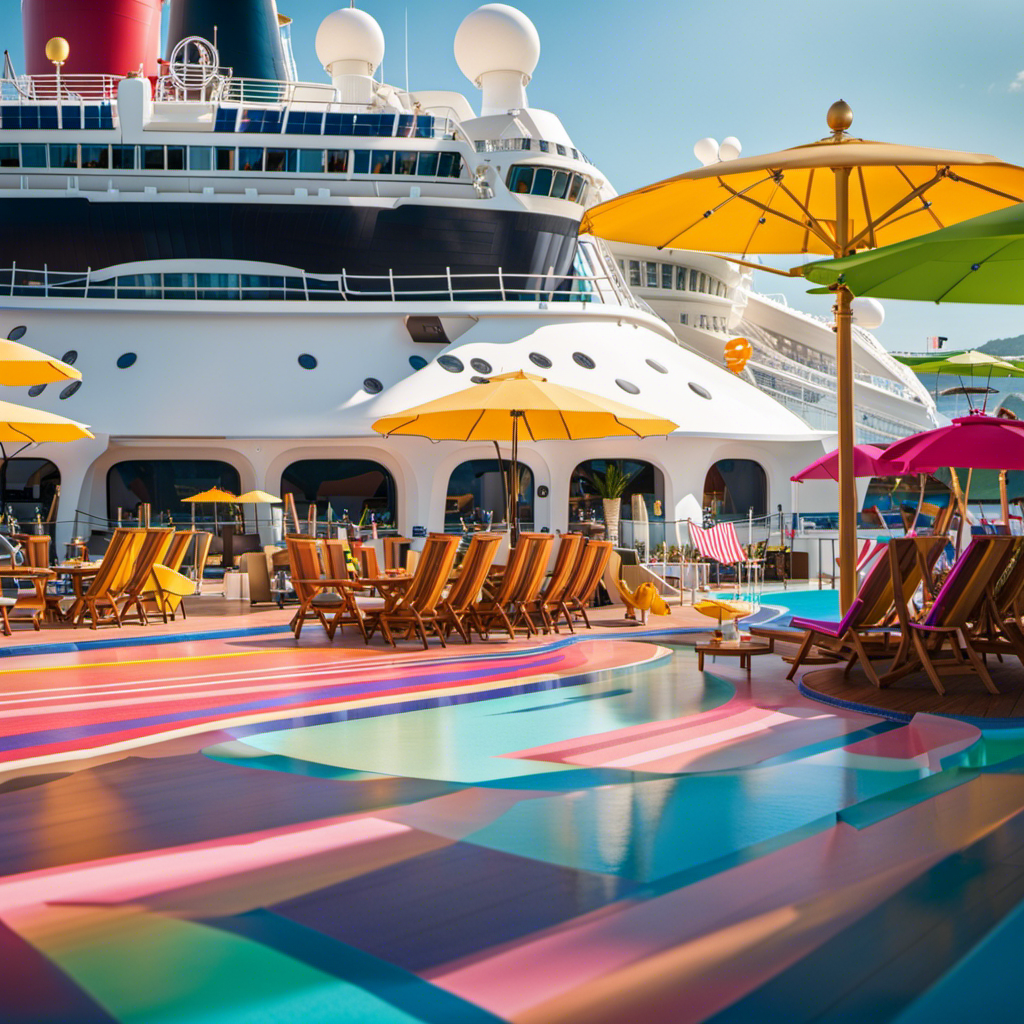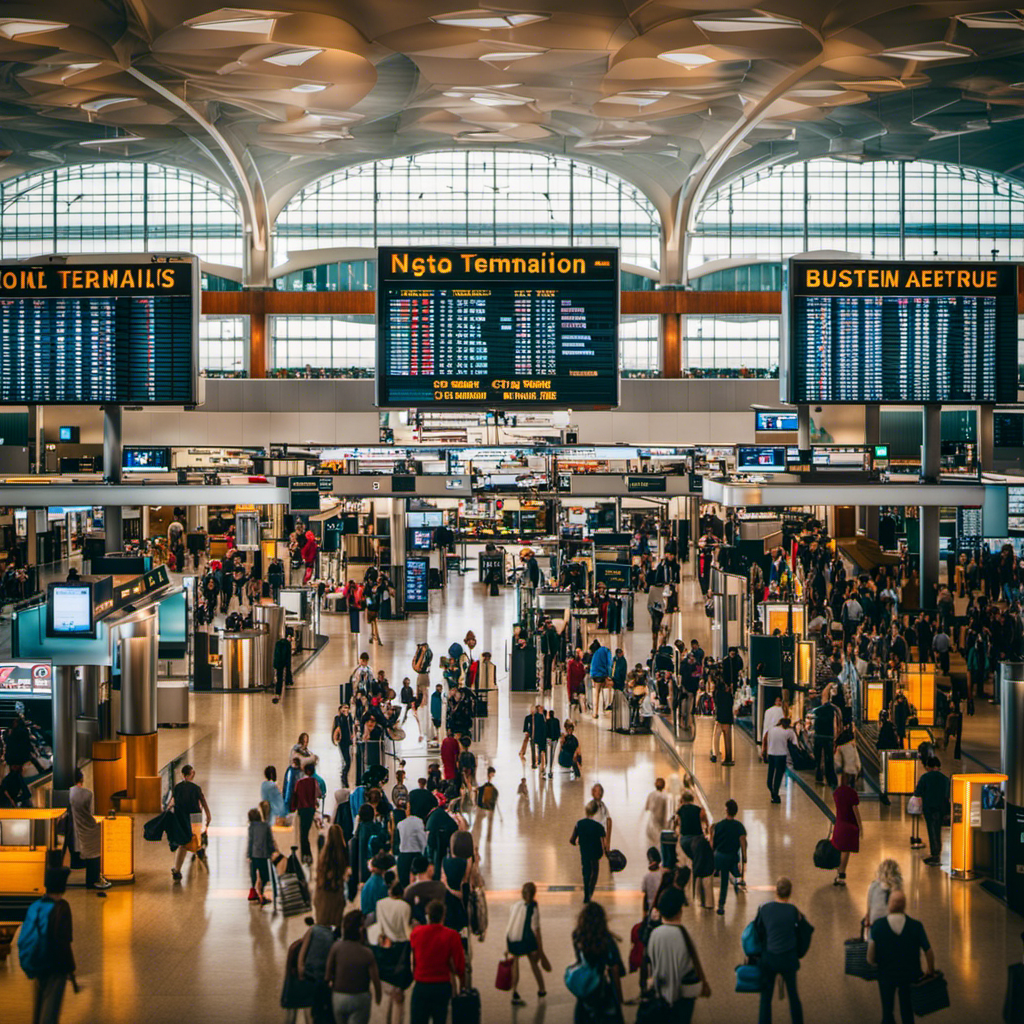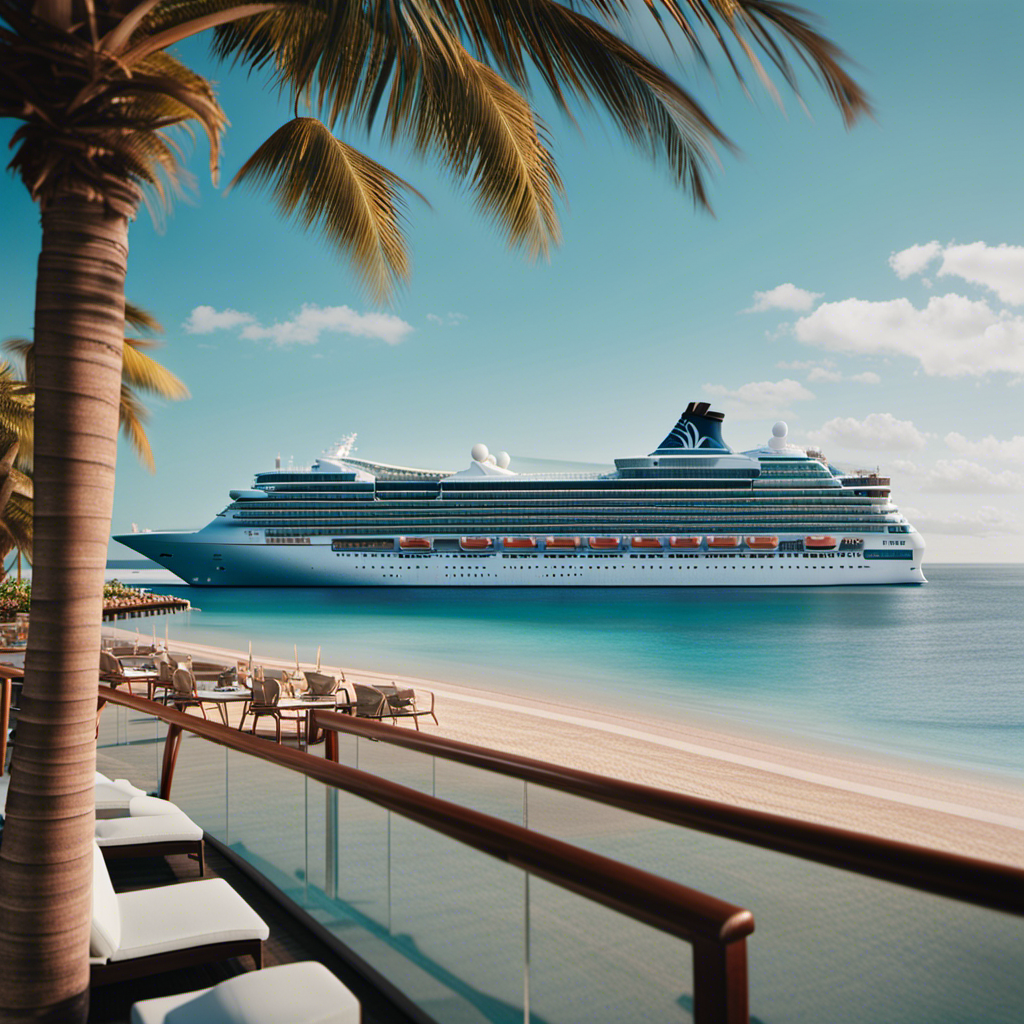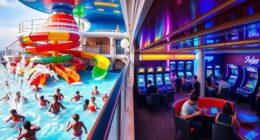As someone who has traveled extensively, I’ve always found both solace and thrill in cruise vacations. Yet, of late, the cruise sector has encountered substantial hurdles stemming from the continuous effects of COVID-19.
Royal Caribbean, a titan in the cruise world, has recently announced the cancellation of sailings on four of its magnificent ships. The largest among them, Symphony of the Seas, reported a staggering 48 positive cases, causing a domino effect of cancellations.
This unfortunate turn of events is emblematic of the challenges faced by the entire industry, as the highly transmissible Omicron variant continues to wreak havoc on land and sea alike.
Key Takeaways
- Royal Caribbean has cancelled sailings on four of its ships due to COVID-related circumstances, including positive cases on board.
- The cruise industry as a whole has been impacted by COVID, with a high number of ships reporting possible cases on board.
- Cruise lines have implemented protocols such as vaccinations, testing, and masking to mitigate the spread of the virus.
- The uncertain future for cruises is expected to continue until COVID case numbers decrease, and cancellations are likely to continue across the industry.
Royal Caribbean’s Cancelled Sailings on 4 Ships
I’m disappointed to hear that Royal Caribbean has cancelled sailings on four ships due to COVID-related circumstances. It’s always disheartening when travel plans get disrupted, especially when it’s something as exciting as a cruise. However, it’s important to remember that Royal Caribbean’s decision to cancel these sailings is driven by the need to prioritize the well-being of their guests, crew, and the communities they visit.
In terms of compensation for the cancelled sailings, Royal Caribbean is known for their customer-centric approach. They have been providing affected passengers with various options, including the choice of a full refund, the ability to rebook for a future cruise, or the option to receive a future cruise credit. This flexibility is appreciated by many passengers who understand the challenges the cruise industry is facing.
Furthermore, Royal Caribbean has been proactive in their communication with affected passengers. They have been reaching out to them directly, providing regular updates on the situation, and offering assistance in rescheduling or refunding their bookings. This level of transparency and support from the cruise line helps to alleviate some of the disappointment and frustration caused by the cancellations.
While it’s unfortunate that these sailings had to be cancelled, it’s crucial to recognize that the cruise industry, like many others, is still navigating the challenges posed by the ongoing pandemic. With the ever-changing situation and the rise of new variants, cancellations are likely to continue across the industry. As guests, our loyalty and understanding are greatly appreciated during these uncertain times.
Symphony of the Seas’ Positive COVID Cases
Symphony of the Seas had 48 positive cases reported last month, causing cancellations on the ship. This outbreak aftermath has significant implications for future cruise travel. Here are three key takeaways:
-
Cruise ships remain at risk: The outbreak on Symphony of the Seas highlights the ongoing challenges faced by the cruise industry. Despite vaccination requirements, testing protocols, and masking measures, COVID cases can still occur onboard, leading to disruptions and cancellations.
-
Health and safety measures are crucial: The incident underscores the importance of robust health and safety protocols. Cruise lines must continue to prioritize the well-being of guests, crew, and the communities they visit. Implementing stringent measures such as vaccinations, testing, and mask-wearing is crucial to mitigate the spread of the virus.
-
Uncertainty looms for future cruises: The outbreak on Symphony of the Seas serves as a reminder that the future of cruise travel remains uncertain. As long as COVID cases continue to spike on land, the industry will face challenges. Cancellations are likely to persist, and it is crucial for guests to show loyalty and understanding during these trying times.
Vision of the Seas’ Postponed Return to Cruising
Vision of the Seas’ return to cruising has been postponed until March 7, 2022, impacting upcoming sailings on the ship. This unfortunate delay has had a significant impact on bookings and has left many travelers disappointed.
The decision to postpone the return of Vision of the Seas was made due to the ongoing COVID-related circumstances that have affected the cruise industry. With the recent surge in cases, cruise lines have been implementing various protocols, including vaccinations, testing, and masking, to ensure the safety of guests and crew.
However, despite these measures, the Omicron variant has still managed to affect nearly every ship sailing in the United States. As a result, many cruise lines, including Royal Caribbean, have had to push back their trips, leading to disruptions and uncertainty in the industry.
The well-being of guests, crew, and the communities visited remains the top priority, and while the situation is challenging, the loyalty and understanding from guests are greatly appreciated during these unprecedented times.
Serenade of the Seas’ Delayed Sailings and Dry Dock
Serenade of the Seas’ delayed sailings and upcoming dry dock have caused changes to my travel plans and raised concerns about the future of my cruise experience. Here are four key points to consider:
-
Impact on crew: The delayed sailings of Serenade of the Seas have undoubtedly affected the crew members who rely on these sailings for their livelihood. It is important to acknowledge the challenges they face during this uncertain time.
-
Dry dock plans: The upcoming dry dock for Serenade of the Seas indicates that the ship will undergo maintenance and renovations. This suggests that Royal Caribbean is committed to enhancing the cruise experience for future passengers.
-
Future plans: The postponement of Serenade of the Seas’ return to cruising raises questions about the future plans for the ship and the itinerary it will offer. Passengers, like myself, eagerly await updates on the alternative itineraries and the new experiences that will be available.
-
Customer refunds and communication: As a guest affected by the delayed sailings, I appreciate clear communication from Royal Caribbean regarding customer compensation plans. It is crucial for the company to keep passengers informed and provide timely refunds or alternative options for their travel arrangements.
Jewel of the Seas’ Interrupted Schedule
Having experienced disruptions before, I am disappointed to learn about the interrupted schedule of Jewel of the Seas. The impact on Jewel of the Seas’ operations is significant, with sailings from January 9 to February 12 being affected and the ship not returning until February 20, 2022.
This disruption is part of the broader crisis faced by the cruise industry due to the ongoing COVID-19 pandemic. With cases spiking on land and the United States still experiencing high case numbers, it’s not surprising that cruise lines are facing challenges.
The well-being of guests, crew, and visited communities remains the top priority, and loyalty and understanding from guests are greatly appreciated. It’s likely that cancellations will continue across the industry until case numbers fall and the situation stabilizes.
COVID Cases Affecting the Cruise Industry
As a cruiser, I am concerned about the rising number of COVID cases impacting sailings and the challenges faced by the cruise lines.
The cruise industry has been working hard to recover from the pandemic, implementing protocols such as vaccinations, testing, and masking. However, despite these efforts, COVID cases continue to affect the industry.
In the past week, 99 out of 110 ships sailing have reported possible cases onboard. The Omicron variant has had a significant impact, with nearly every ship sailing in the United States being affected. Some ships have even been denied entry into ports due to positive tests among the crew.
This uncertainty has led to multiple cruise lines pushing back trips and cancellations are likely to continue. The well-being of guests, crew, and visited communities remains the top priority, and loyalty and understanding from guests are greatly appreciated.
Cruise Lines’ Protocols and Safety Measures
I appreciate the efforts made by cruise lines to prioritize the safety of guests and crew. They have implemented protocols such as vaccinations, testing, and masking. These safety measures are crucial in protecting the health of everyone on board and preventing the spread of COVID-19.
Cruise lines have taken vaccination requirements seriously. They ensure that all guests are fully vaccinated before embarking on their voyages. This not only provides a layer of protection for guests but also reduces the risk of outbreaks on board.
Additionally, regular testing is conducted to identify any potential cases and prevent them from spreading further. Masking requirements have also been put in place to further minimize the risk of transmission.
These comprehensive safety measures demonstrate the commitment of cruise lines to maintaining a safe and enjoyable experience for all passengers.
Omicron Variant’s Impact on Cruise Ships
Passenger safety remains a top priority as cruise lines navigate the impact of the Omicron variant on their ships. The Omicron variant has presented significant challenges for cruise lines, affecting their operations in multiple ways.
Here are some of the challenges faced by cruise lines due to the Omicron variant:
-
Disruptions to sailings: Many cruise lines have been forced to cancel or postpone sailings due to the presence of COVID-19 cases on board their ships. This has resulted in inconvenience for passengers and financial losses for the cruise lines.
-
Port entry denials: Some ships have been denied entry into ports due to positive COVID-19 tests among the crew. This has further disrupted itineraries and created logistical challenges for cruise lines.
Despite these challenges, cruise lines are implementing rigorous protocols to ensure the safety of passengers and crew, including vaccinations, testing, and masking. The well-being of guests, crew, and the communities visited remains the top priority for cruise lines as they navigate the uncertain waters of the Omicron variant’s impact on their operations.
Denied Port Entry Due to Positive Tests
Port entry denials have caused significant disruptions and logistical challenges for ships due to positive tests among the crew. These denials not only impact the cruise industry, but also have a ripple effect on local economies that rely on tourism revenue.
The crew member testing protocols implemented by cruise lines aim to prevent the spread of COVID-19 onboard. However, despite these measures, positive cases are still being detected. As a result, some ships are being denied entry into ports, leading to canceled sailings and financial losses for both the cruise lines and the local businesses that depend on cruise ship visitors.
The impact on local economies cannot be underestimated, as tourism plays a crucial role in supporting jobs and businesses in many port cities. It is essential for cruise lines to continue refining their testing protocols to ensure the safety of crew members and passengers, while also finding ways to mitigate the economic impact on the communities they visit.
Uncertain Future for Cruises Amidst COVID Spike
The future of cruises remains uncertain as COVID cases continue to spike on land. Despite the efforts of cruise lines to implement protocols such as vaccinations, testing, and masking, the cruise industry is still grappling with the impact of the virus.
As of now, 99 out of 110 ships sailing have reported possible cases onboard in the past week, with some ships even being denied entry into ports due to positive tests among the crew. The industry is still in the midst of the crisis, and multiple cruise lines are pushing back trips in response to the rising case numbers.
However, it is worth noting that cases appear to be more mild on average, and some areas have seen a sharp rise followed by a quick drop. The United States, in particular, is still experiencing high case numbers, contributing to the uncertain future of cruises.
As the industry continues to navigate these challenges, the well-being of guests, crew, and visited communities remains the top priority. The cruise industry recovery will heavily depend on how swiftly case numbers fall and the effectiveness of vaccination requirements for passengers.
Loyalty and understanding from guests during this time of uncertainty are greatly appreciated.
Frequently Asked Questions
How Are Royal Caribbean’s Cancelled Sailings on 4 Ships Affecting the Company Financially?
Royal Caribbean’s cancelled sailings on 4 ships are causing significant financial losses for the company. This has a direct impact on employees, as reduced revenue leads to potential job cuts and financial uncertainty.
What Measures Are Royal Caribbean Taking to Ensure the Safety and Well-Being of Their Guests and Crew During the COVID-19 Pandemic?
Royal Caribbean prioritizes guest safety by implementing measures such as vaccinations, testing, and masking. Crew well-being is also emphasized. COVID disruptions, like cancelled sailings and delayed returns, impact passengers’ vacation plans.
How Are the Positive COVID Cases on Symphony of the Seas Being Managed and Treated?
On Symphony of the Seas, positive COVID cases are being managed and treated with protocols like isolation and medical care. The cruise disruptions have had a significant impact on Royal Caribbean, causing cancellations and challenges.
How Have the Postponed Return to Cruising and Delayed Sailings of Vision of the Seas and Serenade of the Seas Impacted Passengers’ Vacation Plans?
The postponed return and delayed sailings of Vision of the Seas and Serenade of the Seas have impacted passengers’ vacation plans. Their satisfaction may be affected, but Royal Caribbean is likely offering alternative itineraries to accommodate them.
How Has the Interruption of Jewel of the Seas’ Schedule Affected the Ship’s Itinerary and Future Sailing Plans?
The interruption of Jewel of the Seas’ schedule has caused significant disruptions to its itinerary and future sailing plans. This has resulted in operational challenges and a negative impact on passenger satisfaction.
Claire, a creative soul with an unquenchable thirst for storytelling, is an integral part of the Voyager Info team. As a dedicated writer, she weaves captivating narratives that transport readers to enchanting cruise destinations and beyond.
Claire’s love affair with writing began at an early age when she discovered the magic of words and their ability to craft worlds and emotions. Her innate curiosity led her to explore various literary genres, but it was travel writing that truly captured her heart. Drawing inspiration from her own globetrotting adventures and encounters with diverse cultures, Claire embarked on a journey to become a travel writer par excellence.

